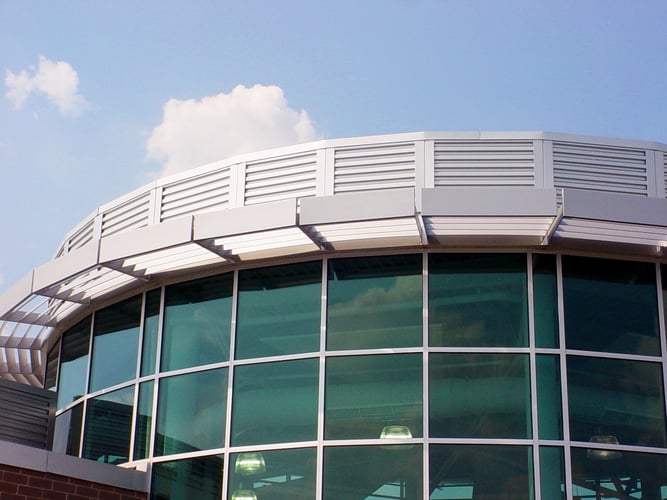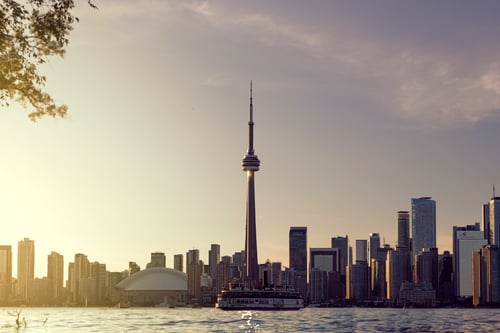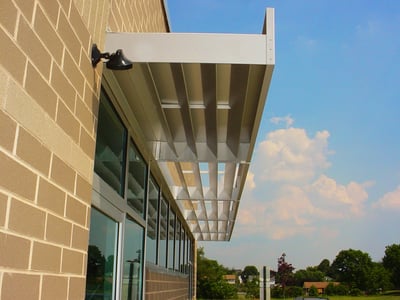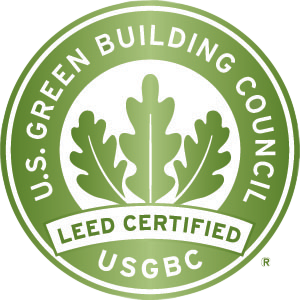Sunshades are designed to block sunlight and prevent the resulting radiant heat from bleeding into your interior spaces. Learn more about these useful louvers on the Newsstand.
Cooling a building can be a challenging task in the summer. HVAC systems must work hard to cool air as temperatures rise outside. The system must be working at peak efficiency to meet these demands. Summers are tough for HVAC, but there are ways to ease system stress. Passive cooling from sunshades can help ease the burden.
Need help with an upcoming project? Contact Airline Louvers today! We can build what you need.

What are Sunshades?
Sunshades, also known as shading devices, are louvered screen assemblies that are mounted over windows to provide shade. They have a similar build to louvers – angled blades contained within four frame members – but they have certain features that set them apart. The sunshade's frame will be flat and featureless. Designers can choose jambs with channels or other features for style.
Typically, cables or rods attach sunshades to the wall, cantilevering them over the opening. Manufacturers will offer different mounting options to work with your project. They will mount the screen horizontally to shade the window from the sun. Customize the angle of the screen’s blades to match the needs of the application.
.webp?width=400&height=533&name=DSC02389_editsm%20(Resize).webp)
Placing Sunshades in the Right Spot
Designers position sunshades above windows receiving direct sunlight to provide maximum shade all day. By blocking incoming sunlight, sunshades can help reduce the buildup of heat. To achieve this, they need to understand how the sun will shine on their project.
Place sunshades on the eastern and western facades of the building. Windows on these sides will see the most sunlight during the morning for the eastern sides and the afternoon to evening for the western sides.
In the Northern Hemisphere of the world, sunshades should also go along windows facing southward. These windows will typically receive sunlight throughout the day. Although the directions of sunrise and sunset are constant, the solar angles of sunlight will change from season to season. You will need to consider these angles when designing your sunshades.
 Solar angles will change based on several factors, including the time of year and the location of your project. Understand these factors when designing sunshades.
Solar angles will change based on several factors, including the time of year and the location of your project. Understand these factors when designing sunshades.
For the best coverage, designers should determine the angles of sunlight at key points in the year and at key times of day for the project's location. Designers will need to collect solar angle data at its highest point in the summer, at its midpoint angle, and at its lowest angle. These data points will help designers determine the size and location of the sunshade.
The specific dates of when these solar angles occur will differ depending on where the project is located. Projects in the US will have similar dates, but they won’t be the same. There are tools online that can help calculate solar angles across the world. The National Oceanic and Atmospheric Administration provides this free solar angle calculator online.
Their solar angle calculator can determine the solar angles for several US cities at various times of the year. Select a city from the list, or input the longitude and latitude of your project, then set the date and time. The calculator will provide the angle as the solar azimuth.

Once they've collected the solar angle data, designers and engineers determine sunshade placement, size, and blade angle. This data will ensure that each finished shade blocks the most sunlight during the heat of the year. The same sunshades may not block sunlight during the winter, but this can work to your advantage.
Sunshades and Natural Heating
As temperatures drop, the aim of your HVAC system will change from cooling rooms to heating them. Radiant heat from the sun can warm these spaces and ease the burden on the heating system. The most efficient sunshade design allows for passive cooling in the summer and passive heating in the winter. Sunshades conserve energy.

With the specifics in place, designers can customize their sunshades to fit their project’s style. Sunshades can accept many of the same style options as louvers, including specialty powder paint finishes, color matching, and other finish types. Make them stand out from the building’s envelope, so that they draw attention to other surrounding features.
Learn more about louvers with these Newsstand articles:
- Thin Line Louvers for Architectural Design and PTAC
- The Condenser - Mullions, Dividing Lines
- Louvers by the Numbers
Need help with an upcoming project? Contact MCDLG today. We are ready to help you.
.webp?width=91&height=70&name=MCDLG%20Logo%20(Resize).webp)
.webp)





